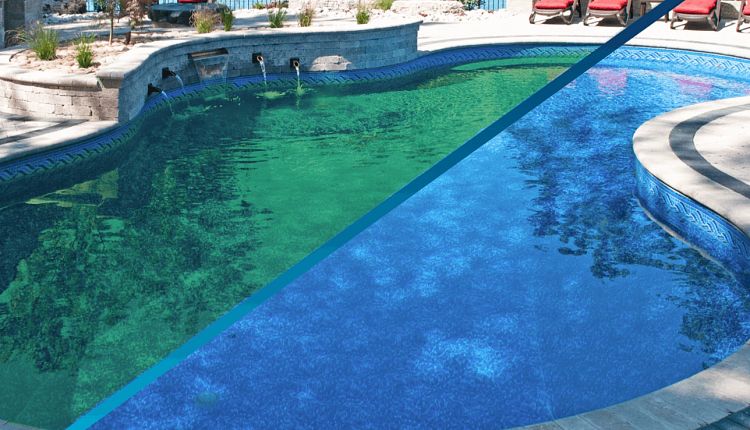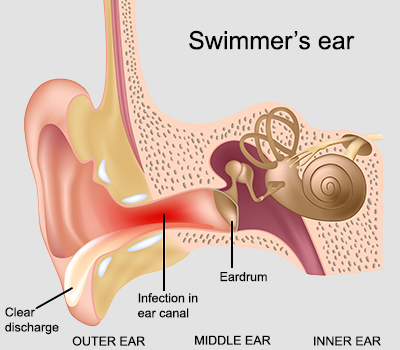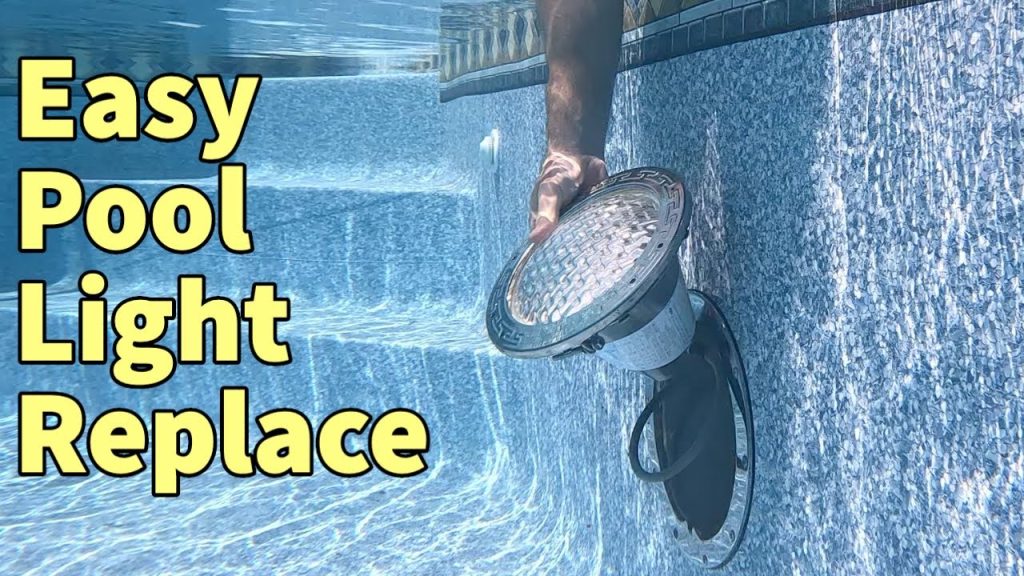Algae in your pool? It’s a common issue.
But you can fix it fast. A green, murky pool can ruin your swimming plans. Algae growth is not only unsightly but also a health concern. It can make your pool slippery and unsafe. Luckily, getting rid of algae is straightforward with the right steps.
Whether you’re dealing with green, yellow, or black algae, knowing how to tackle it is crucial. In this guide, you will learn effective methods to clear your pool of algae and prevent it from returning. Keep reading to discover simple, actionable tips to keep your swimming pool clean and inviting all season long.
Identifying Algae Types
Algae can turn your sparkling pool into a murky mess. Identifying the type of algae is crucial to treating it effectively. Each type of algae has distinct characteristics. Understanding these can help you choose the right method to clear your pool.
Green Algae
Green algae is the most common type found in swimming pools. It appears as green, slimy patches on the walls and water. This algae spreads quickly. It thrives in pools with poor filtration or low chlorine levels. Regular brushing and shock treatments can usually eliminate green algae.
Yellow Algae
Yellow algae, also known as mustard algae, is less common but more persistent. It looks like sand or pollen and clings to pool surfaces. This algae is resistant to normal chlorine levels. It often requires higher doses of chlorine and thorough brushing to remove.
Black Algae
Black algae is the most difficult to get rid of. It appears as dark spots with a protective layer. This algae roots itself deeply into pool surfaces. Strong algaecides and scrubbing are necessary to treat black algae. It is crucial to remove its roots completely.
Pink Algae
Pink algae, or pink slime, is actually a bacteria. It forms slimy pinkish layers on pool surfaces and equipment. This type of algae thrives in areas with low circulation. Regular cleaning and using a good algaecide can help prevent pink algae.
Causes Of Algae Growth
Algae growth in your swimming pool can be frustrating. Understanding the causes is essential to keeping your pool clean and clear. Several factors contribute to algae growth. Let’s explore some of the main reasons.
Poor Filtration
Poor filtration is a common cause of algae growth. Your pool filter removes dirt and debris. If it is not working well, particles stay in the water. These particles feed algae, helping them grow.
Regularly clean and check your filter. Make sure it is working properly. This reduces the chances of algae forming in your pool.
Imbalanced Water Chemistry
Imbalanced water chemistry leads to algae growth. The pH level and chlorine levels must be balanced. High pH or low chlorine creates a perfect environment for algae.
Test the water regularly. Maintain the right levels of chemicals. This helps prevent algae from taking over your pool.
Inadequate Sanitization
Sanitizers like chlorine kill bacteria and algae. If you do not use enough, algae will grow. It is important to keep the sanitizer levels in check.
Ensure your pool has adequate sanitization. This will keep algae at bay and your pool water clean.
Environmental Factors
Environmental factors also play a role in algae growth. Leaves, dirt, and other debris fall into the pool. These provide nutrients for algae.
Sunlight is another factor. Algae thrive in sunny conditions. Use a pool cover to reduce debris and sunlight exposure. This can help prevent algae from growing.
Essential Pool Maintenance Tools
Maintaining a clean swimming pool is vital for an enjoyable swim. Algae growth can be a common issue, but with the right tools, you can keep your pool sparkling clean. In this section, we will cover the essential pool maintenance tools you need to combat algae effectively.
Pool Brushes
Pool brushes are crucial for scrubbing pool surfaces. They help remove algae clinging to the walls and floor. Use a brush with stiff bristles for concrete pools and a softer brush for vinyl or fiberglass pools. Regular brushing prevents algae buildup.
Vacuum Cleaners
Pool vacuum cleaners remove dirt and debris from the pool floor. There are different types of vacuum cleaners available:
- Manual Vacuums: Require you to push them across the pool floor.
- Automatic Vacuums: Operate independently and cover the entire pool area.
- Robotic Vacuums: Offer the highest convenience and efficiency.
Choose the one that suits your needs and budget.
Test Kits
Test kits are essential for monitoring your pool’s chemical levels. They help you maintain the right balance of chlorine, pH, and alkalinity. A balanced pool prevents algae growth. Use test kits at least twice a week.
Chemical Dispensers
Chemical dispensers ensure the even distribution of pool chemicals. They come in various forms:
- Floating Dispensers: Float on the pool surface and release chemicals gradually.
- Inline Dispensers: Installed into the pool’s plumbing system for automatic dispensing.
These tools help maintain consistent chemical levels, keeping algae at bay.
| Tool | Purpose | Frequency |
|---|---|---|
| Pool Brushes | Scrubbing surfaces | Weekly |
| Vacuum Cleaners | Removing debris | Weekly |
| Test Kits | Monitoring chemicals | Twice a week |
| Chemical Dispensers | Distributing chemicals | Continuous |

Credit: www.tiktok.com
Balancing Pool Water Chemistry
Keeping your pool water chemistry balanced is vital for a clean pool. Proper balance prevents algae and keeps the water safe for swimming. Let’s explore the key components of pool water chemistry that you need to monitor.
Ph Levels
The pH level of your pool water should be between 7.2 and 7.6. A balanced pH prevents algae growth and ensures the effectiveness of chlorine. You can use a pH testing kit to monitor the levels. If the pH is too high, add a pH reducer. If it’s too low, use a pH increaser.
Chlorine Levels
Chlorine is essential for killing bacteria and algae. The ideal chlorine level is between 1.0 and 3.0 ppm (parts per million). Test your pool water daily and adjust the chlorine levels as needed. You can add chlorine tablets or liquid chlorine to maintain proper levels.
Alkalinity
Alkalinity acts as a buffer for pH levels. It should be between 80 and 120 ppm. Test the alkalinity weekly. If the alkalinity is too low, add sodium bicarbonate. If it’s too high, add muriatic acid to lower it.
Calcium Hardness
Calcium hardness prevents corrosion and scaling. The ideal range is 200 to 400 ppm. Test the calcium hardness monthly. If the levels are too low, add calcium chloride. If too high, partially drain and refill the pool with fresh water to dilute the calcium.
Here’s a quick reference table for the ideal pool water chemistry levels:
| Parameter | Ideal Range |
|---|---|
| pH Levels | 7.2 – 7.6 |
| Chlorine Levels | 1.0 – 3.0 ppm |
| Alkalinity | 80 – 120 ppm |
| Calcium Hardness | 200 – 400 ppm |
Balancing these elements will help you maintain a clean, algae-free pool. Consistent monitoring and adjustments are key to pool maintenance.
Effective Algae Treatment Methods
Algae can turn your pool from a fun spot to a green mess. Getting rid of algae is essential for a clean, healthy swimming pool. Here are some effective methods to combat algae growth.
Shocking The Pool
Shocking the pool means adding a large dose of chlorine. This kills bacteria and algae fast. Use a chlorine shock product. Follow the instructions on the package. Run the pool pump for at least 24 hours. This ensures the shock treatment circulates properly.
Brushing And Vacuuming
Brushing the pool walls and floor helps remove algae. Use a pool brush suitable for your pool type. Brush every corner, step, and ladder. After brushing, vacuum the pool. This removes the dead algae from the water. Regular brushing and vacuuming keep algae at bay.
Using Algaecides
Algaecides are chemicals made to kill algae. Choose the right algaecide for your pool. Read the label for proper dosage. Add the algaecide to the pool water. Run the pump to circulate it. Algaecides can prevent future algae growth.
Phosphate Removers
Phosphates are nutrients for algae. Removing them helps control algae growth. Use a phosphate remover product. Add it to the pool as directed. Test the water for phosphate levels. Keep the levels low to prevent algae blooms.
Preventative Measures
Keeping your swimming pool free from algae requires consistent effort. By taking some preventative measures, you can ensure a clean and safe swimming environment. These measures will save you time and money in the long run.
Regular Cleaning
Regular cleaning is crucial. Brush the pool walls and floor weekly. This helps to remove algae spores before they grow. Skim the surface daily to clear debris. A clean pool discourages algae growth.
Consistent Chemical Levels
Maintain consistent chemical levels. Test the pool water frequently. Ensure the pH, chlorine, and alkalinity are balanced. Proper chemical levels prevent algae from growing. Use a high-quality pool test kit.
Proper Filtration
Proper filtration is essential. Run your pool filter daily for at least 8 hours. Clean the filter regularly. A well-maintained filter removes contaminants that algae feed on. Ensure the filter system is working efficiently.
Covering The Pool
Cover the pool when not in use. This blocks sunlight which algae need to grow. A pool cover also keeps debris out. Less debris means fewer nutrients for algae. Invest in a good quality pool cover.
Natural Solutions
Keeping your swimming pool clean and algae-free can be challenging. Algae not only looks unpleasant but can also make your pool water unsafe. Fortunately, there are natural solutions available that can help you maintain a clear and healthy pool. Let’s explore some effective methods to naturally eliminate algae.
Uv Pool Sanitizers
UV pool sanitizers use ultraviolet light to kill algae and other harmful microorganisms. This method is chemical-free and safe for your pool. The UV light disrupts the DNA of algae cells, preventing them from reproducing.
- Chemical-Free: No harsh chemicals required.
- Effective: Kills up to 99.9% of bacteria and algae.
- Safe: Non-toxic and environmentally friendly.
Installing a UV pool sanitizer is straightforward. It fits into your existing pool filtration system. Routine maintenance involves replacing the UV bulb annually. This ensures optimal performance.
Ozone Generators
Ozone generators produce ozone gas, a powerful oxidizer that destroys algae and bacteria. Ozone is a natural substance that leaves no harmful residues.
- Powerful Oxidation: Effectively breaks down algae cells.
- Eco-Friendly: Ozone converts back to oxygen, leaving no pollutants.
- Reduces Chemical Use: Less need for chlorine and other chemicals.
Ozone generators can be integrated into your pool’s circulation system. Regular checks and occasional maintenance keep the system running smoothly. This method provides a long-term solution for algae control.
Copper Ionization
Copper ionization is another natural solution. It releases copper ions into the pool water. Copper ions are toxic to algae but safe for humans.
| Benefits | Details |
|---|---|
| Algae Control | Copper ions prevent algae growth. |
| Long-Lasting | Effect can last for weeks. |
| Safe | Non-toxic to swimmers. |
To implement copper ionization, you need an ionizer unit. This unit releases controlled amounts of copper ions into the water. Regular monitoring ensures the correct ion levels. This keeps your pool algae-free.

Credit: www.wikihow.com
When To Call A Professional
Keeping your swimming pool free of algae can be a challenge. Sometimes, even with regular maintenance, algae problems persist. When this happens, it might be time to call in a professional. This guide will help you understand when it’s best to get expert help.
Persistent Algae Issues
If algae keeps returning, despite your efforts, it may be a sign of a bigger problem. A professional can identify hidden issues that cause recurring algae. They have the right tools and knowledge to tackle stubborn algae growth.
Complex Water Chemistry Problems
Balancing pool chemicals can be tricky. If you struggle to maintain the right pH levels or chlorine balance, it’s best to call a professional. They can test the water and provide solutions to stabilize it.
| Problem | Solution |
|---|---|
| Imbalanced pH Levels | Professional water testing and chemical adjustments |
| Low Chlorine Levels | Expert advice on proper chlorine usage |
Equipment Malfunctions
Sometimes, algae issues are due to faulty equipment. This could be a broken pump or a malfunctioning filter. If your equipment isn’t working right, a professional can fix or replace it.
- Inspecting and repairing pool pumps
- Cleaning or replacing filters
- Ensuring proper circulation
These issues can be hard to diagnose on your own. A professional will ensure everything runs smoothly, preventing future algae problems.

Credit: compasspoolsmelbourne.com.au
Frequently Asked Questions
How Do I Prevent Algae Growth?
Maintain proper chlorine levels and pH balance. Regularly brush and vacuum the pool. Use algaecide treatments as needed.
What Causes Algae In Pools?
Algae thrive in warm, stagnant water with poor circulation. Low chlorine levels and unbalanced pH also contribute.
Can I Use Household Bleach For Algae?
Yes, household bleach can kill algae. However, pool-specific chemicals are more effective and recommended.
How Often Should I Check Pool Chemicals?
Check pool chemicals at least twice a week. More frequent checks are needed in hot weather.
Conclusion
Keeping your pool algae-free is easier than you think. Regular cleaning and proper chemical balance are key. Always check your pool’s pH levels. Use algaecide as needed. Clean filters often to prevent buildup. Brush pool walls and floors regularly. Stay vigilant.
Consistent maintenance ensures a clear, inviting pool. Enjoy swimming without the worry of algae. Happy swimming!



